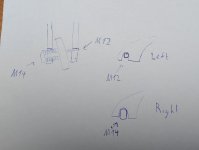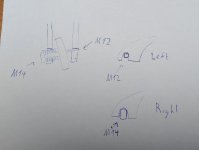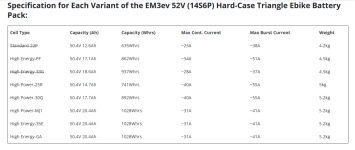I've chosen to use the cassette version of the Leaf motor.
- The motor is 137mm in width. What is the actual O.L.D. width from your experience with space for a disk brake? Around 140mm?
- Is there a way to resize the motor to fit better in 135mm dropouts? Grinding or something similar? Because of the disk brake, if possible, maybe this has to be done on the cassette side?
- Is waterproofing the motor recommended and if yes, what glue/silicone is the best?
- Is the Grin Tech Torque Arm V7 a good choice and sufficient for use on aluminum frames?
- Do you recommend lacing the motor myself (I don't have experience) or should I find a nearby workshop to do it for me? Can I measure everything myself and use the Grin Tech spoke simulator for the lacing or do I need additional information from Leaf (like dishing offset, etc.)?
You're probably going to need to make two spacers, one that goes underneath the cassette around the freehub, and the other on the outside of the cassette to keep the small cog from being pressed against the frame and rubbing or locking up when you try to pedal. I had this issue with a Leafbike 1500W 4T with 7-speed cassette built into a 26" wheel, first on my KMX trike, and again on my DB mountainbike. Just a heads up, and you'll be able to determine what size you need to make them upon installation.
Anyway, answers:
1. I never measured. The disc rotor does get spaced further away from the center of the axle than it was on the unmotorized wheel the disc rotor came off of. This caused a clearance issue with the stock caliper on a DB mountain bike with the motor installed. I had to hacksaw off part of the pad adjustment screw to keep it from grinding into the case of my motor from lack of clearance. My Avid BB7 caliper did not fit, either.
2. I wouldn't bother. A flathead screwdriver is enough to pry the dropouts open fairly easily. If you must remove the wheel for any reason(such as replacing an inner tube), removing and reinstalling the torque arms will be most of the work/time expended.
3. I never had an issue with water ingress in over 20,000 miles and two years of use. I rode in all weather conditions including thunderstorms and snow/road salt. But my vehicle had a body shell with a wheel well cover. This wheel well did trap lots of dirt, road grime, and salt, but the motor remained relatively free of it inside, noted when I took it apart to replace bearings and Hall sensors.
4. Excellent choice. If you're going to have any regen at all, install one on BOTH rear dropouts. I have a V7 on the drive side and a V4 on the cassette side on my mountainbike using a Leafbike 1500W 4T cassette, and a V7 on the freewheel side and a custom aluminum clamp arm on the drive side of my KMX trike using a Leafbike 1500W 3T freewheel. Both vehicles have the axle snug in those dropouts and it doesn't rock back and forth. Strong regen has proven reliable thus far for hundreds of miles on both vehicles with at least one V7 on each. The downside is that a tire change is a 2 hour ordeal and requires a dedicated toolset that you must carry on long rides in case of a rear flat, or you're not getting that wheel off and back on again.
5. I'd recommend buying the motor built into the size of wheel that you want. Lacing wheels up are a time-consuming pain in the ass if you haven't done it before, and it's difficult to balance/dish it correctly. I didn't get my first attempts quite right and when I try to lace up my front Grin all-axle motors to 16" DOT rims, I am probably going to ask this site for help, because I don't want a failure at 60+ mph and want to make sure I use the right spoke nipples next time around. I'll also have to re-do my rear Leafbike 3T wheel as well. If you ordered it not built into a wheel, you may still be able to change your order if it hasn't shipped out yet, and I would recommend doing so if still possible. Having a shop lace it up for you is going to cost hundreds of dollars more than having Leafbike do it in-house.










